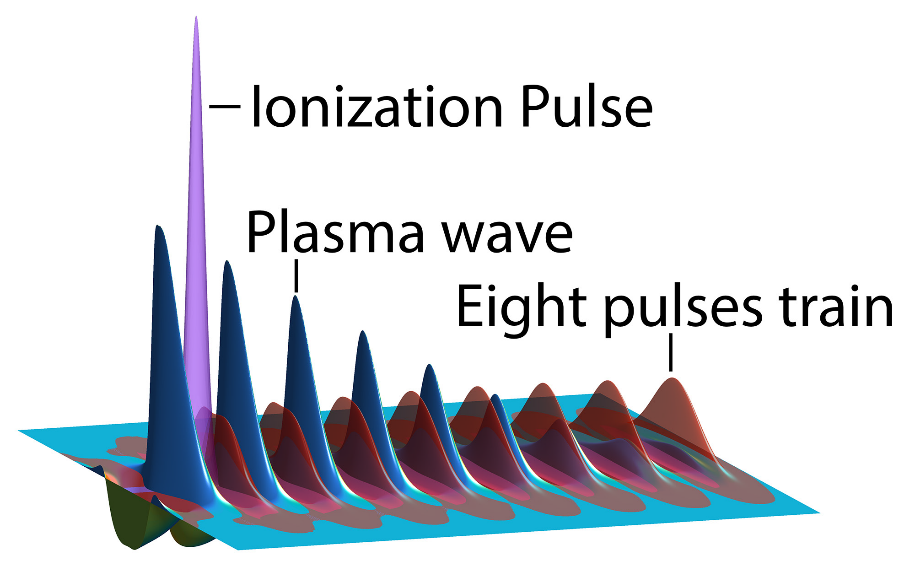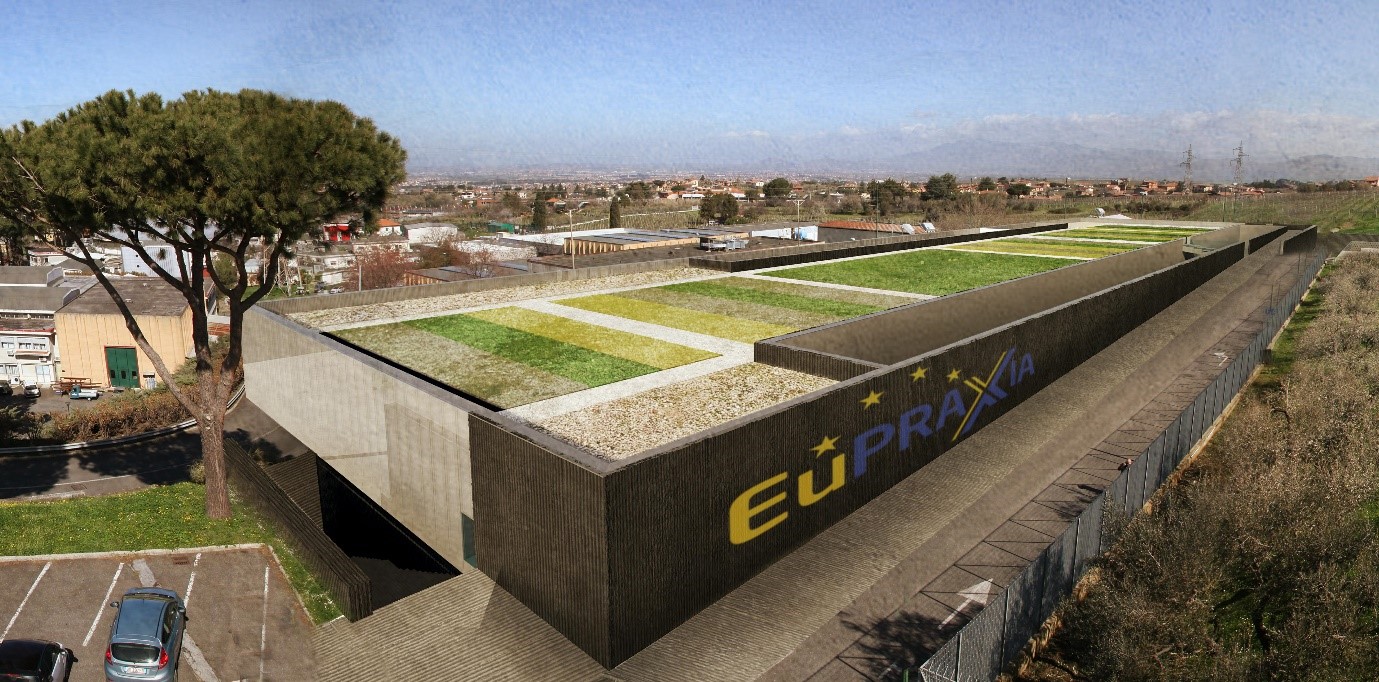The EuPRAXIA (European Plasma Research Accelerator with eXcellence In Applications) project aims to design and implement a novel distributed research infrastructure based on plasma accelerator technology. Centred around the construction of a compact plasma electron accelerator with high beam quality and energies up to 5 GeV at two main sites in Europe, it will provide a first demonstration of this technology as part of a user facility, while also realising a significant reduction in terms of accelerator length compared to RF-based machines. Beyond the accelerator itself, EuPRAXIA will develop and make available multiple user applications, from X-ray free-electron laser beamlines and compact radiation sources for life sciences and medical imaging to ultrashort electron and positron beams suitable for accelerator R&D and material science studies.
As part of a design study between 2015 and 2019, a consortium of 41 institutions and more than 240 researchers from all over the world developed the key concepts and designs of the proposed EuPRAXIA facility. Emphasizing a risk-mitigated approach, this led to the choice of suitable methods and components from a combination of well-established existing technologies, improvements of novel, previously proposed techniques, and completely new concepts.
The range of technologies optimized in the context of EuPRAXIA has thus been wide and included, among others, designs for a stable, high-repetition rate laser system (see G. Toci et al. Instruments 3 (40), 2019 and M. Huebner et al. Instruments 3 (34), 2019), an X-band linac (see e.g. M. Diomede et al. Nucl. Instr. Meth. A 909 (243), 2018), plasma beam dumps (see G. Xia et al. Instruments 4 (10), 2020), emittance preservation schemes (for example X. Li et al. Phys. Rev. AB 22 (021304), 2019) and beam focusing through plasma lenses (e.g. R. Pompili et al. Phys. Rev. Lett. 121 (174801), 2018 and C.A. Lindstrom et al. Phys. Rev. Lett. 121 (194801), 2018). Several of the entirely novel technology concepts integrated in the EuPRAXIA design, however, have also shown great promise and, while not tested experimentally yet, have been validated through peer-review and publication in high-impact journals. Two examples are summarized here.

A concept by A. Ferran Pousa et al. for a multi-stage design to control the beam energy spread in a plasma accelerator was proposed in 2019 (A. Ferran Pousa et al. Phys. Rev. Lett. 123 (054801), 2019) and awarded with the Bruno Touschek prize from the Accelerator Group of the European Physical Society in May this year. It addresses the issue of correlated energy spread which is typically very large for electron beams accelerated in a plasma due to the strong gradient of the accelerating field. By splitting the acceleration process between two plasma stages separated by a chicane, the energy chirp gained in the first stage can be inverted in the chicane and then compensated with the energy correlation built up in the second plasma target. As the energy spread compensation occurs in parallel to the acceleration of the beam, the entire design can be very compact. The research team reports, for example, final electron beam properties of 5.5 GeV in energy as well as 0.12% (total) and 0.028% (slice) in relative energy spread from their test simulations of a 1.5m-long machine setup. Despite the need for externally injecting the electron beam into, at least, the second plasma stage, a sub-micron beam emittance is preserved, as the simulations combining particle-in-cell
A second concept developed as part of the EuPRAXIA study and integrated as a promising option into its design is a new electron beam self-injection scheme termed resonant multi-pulse ionisation (ReMPI) injection, proposed by P. Tomassini et al. (P. Tomassini et al. Phys. Plasmas 24 (103120), 2017; P. Tomassini et al. Phys. Rev. AB 22 (111302), 2019; P. Tomassini et al. Plasma Phys. Control. Fusion 62 (014010), 2019 and others). In this technique, a train of short laser pulses is propagated through a dopant-enriched gas target in such a way that most of the gas is ionised and a high-amplitude plasma wakefield is resonantly excited by the pulse train. In the meantime, the lower intensity of the individual pulses ensures that the inner electrons of the dopant atoms remain unionised. An additional higher-frequency ‘ionisation’ laser pulse, however, can co-propagate and further ionise the dopant, thus allowing electrons locally released in the process to become trapped by the plasma wakefield and form a compact, low-emittance electron beam to be accelerated.

As Paolo Tomassini, co-inventor of the concept, states “simulations carried out under different plasma conditions show feasibility of the scheme with state-of-the-art-lasers making ReMPI suitable either for direct interaction or as ultra-low emittance injector for GeV-scale energy boosting.” In all scenarios, numerical studies predicted sub-100 nm beam emittances as well as relative energy spreads between 0.9% (at 5 GeV beam energy) and 1.65% (at 150 MeV beam energy), thus improving on the state of the art for plasma injectors and providing adequate conditions for complex beam applications. While practical considerations for the laser pulse train generation have already been made, it is, nonetheless, essential that this concept and its feasibility, similarly to the scheme above, are tested experimentally, an endeavour which is in planning as part of EuPRAXIA’s current preparation phase.
The design study of the EuPRAXIA facility was completed in October 2019, summarising its key results in the EuPRAXIA Conceptual Design Report. The project has now moved into its preparation phase with several recent developments. A new project consortium was formed, bringing the number of EuPRAXIA partners up to 40 members and 11 observer entities, with the latter including both companies and research laboratories. Italy has been defined as the lead country with the INFN National Laboratory at Frascati confirmed as host of one of the two main construction sites of EuPRAXIA. The location of the second site will be decided until 2023 among a number of attractive candidates in the United Kingdom, Czech Republic and Italy. These will be supported by a set of five excellence centres at existing research facilities across Europe which will undertake important parts of the R&D and prototyping of EuPRAXIA throughout its preparation, implementation, and operation.
Complementary to these developments, a proposal to the European Strategy Forum on Research Infrastructures (ESFRI) was submitted in September 2020, which, if successful, would put EuPRAXIA on the 2021 Roadmap for European Research Infrastructures to be built in the next decade. This has been backed up by statements of political support from ministries and agencies in Italy, Portugal, Hungary, Czech Republic and the United Kingdom, in addition to an initial financial commitment of more than 100 M€ securing the implementation of the first phase of the Italian EuPRAXIA site.

